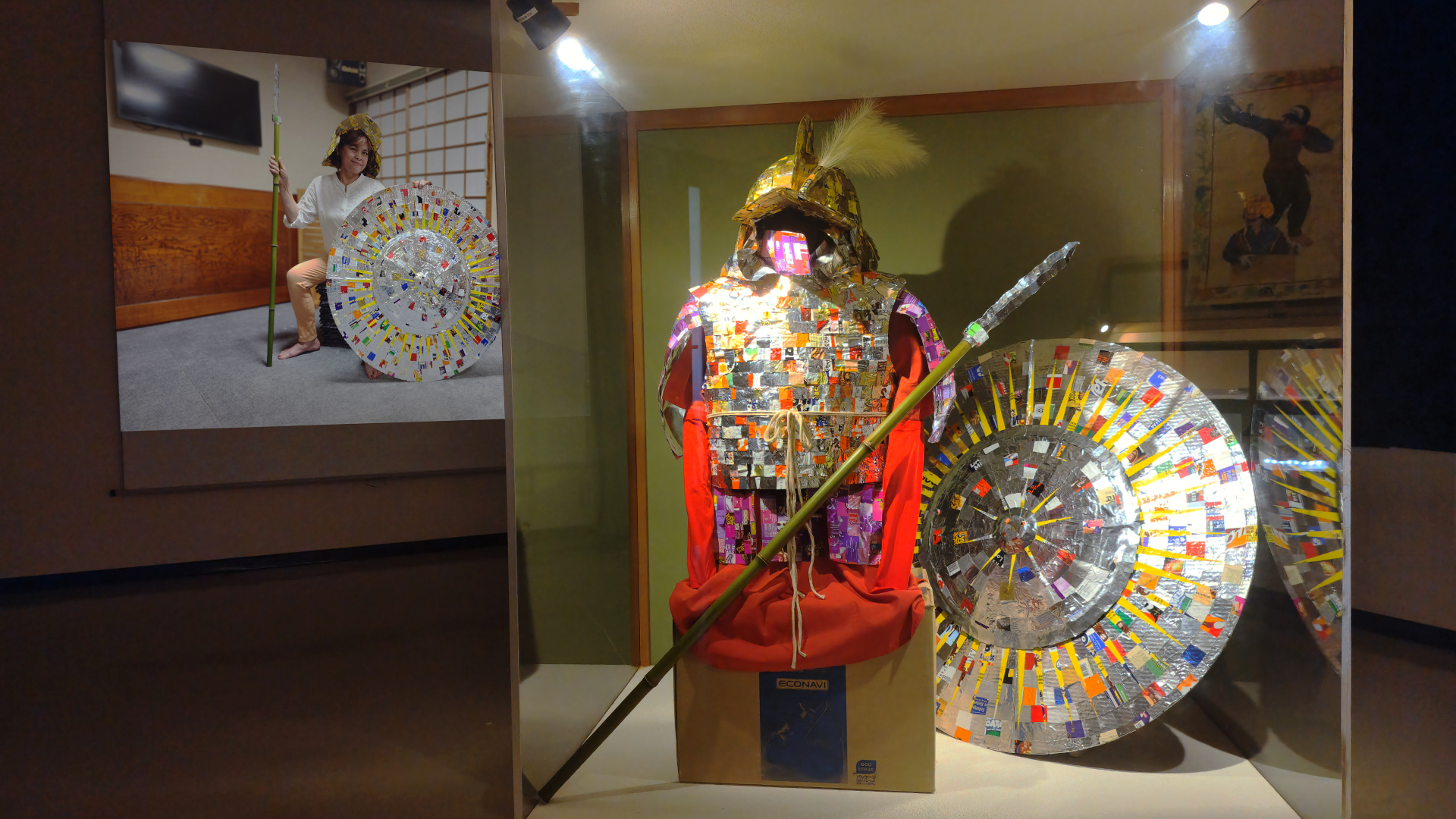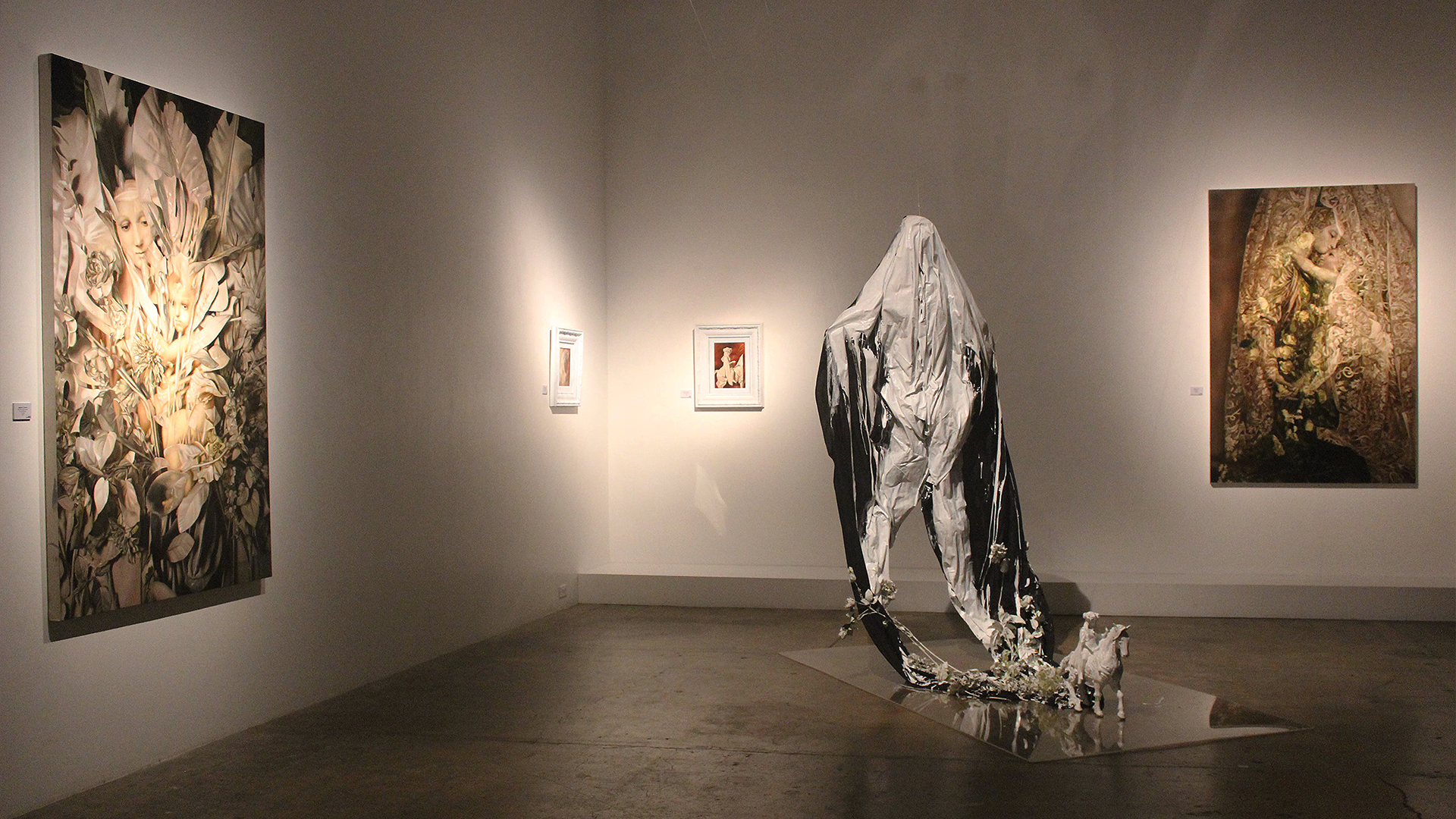From being prosaic to being poetic: Exhibitions in December 2023
From discarded packagings of goods and sheets of used sandpaper to diagrams and archival materials to long-standing artistic preoccupations, the artists featured this month turn mundane objects, scenarios, and musings into subjects of their artistic practices. The works of art in the exhibitions are not merely a refraction of the artists’ lived experiences, but an ode to human condition.
Words Amanda Juico Dela Cruz
December 21, 2023
Photo from Metropolitan Museum of Manila and Finale Art File
From discarded packagings of goods and sheets of used sandpaper to diagrams and archival materials to long-standing artistic preoccupations, the artists featured this month turn mundane objects, scenarios, and musings into subjects of their artistic practices. The works of art in the exhibitions are not merely a refraction of the artists’ lived experiences, but an ode to human condition. From personal to political and even existential. Acknowledging the struggles that come with existing, the works deal with human’s connection to socio-political realities, to existential anxieties, to the artworld, to landscapes, to hope and rebirth, and to spirituality.
“Karakoa Journey: From Past to Present”
Artist: Mervy Pueblo | Galleria Duemila
Photo from Galleria Duemila
The poster of the exhibition shows half of the round shield of a karakoa warrior, as hinted by the title. One would notice how colorful the shield is all because of the packaging materials and discarded readymades that the artist obtained in her dumpster diving in Nakanojo during her residency. The junks she had collected were packagings of goods often included in a balikbayan box—an avatar of care, a prosthetic self, a peace offering for one’s absence. The installation of a karakoa warrior’s armor, and the interactive performance that comes with it, is an ode to the migrant laborers.
“GRIT [surface 2]”
Artist: Christina Quisumbing Ramilo | Underground
Photo from Underground
Sandpaper, what a mundane medium to work with. Yet, this prosaic thing’s very own grit turns it into a poetic object—a collage, a montage, an assemblage, a bricolage. Grit is the strength of character. Endurance. Some of the sheets of sandpaper that the artist touched and committed to have waited for too long—for about a decade, even—to be used again, to be hung, to be displayed as a memento of grit, of endurance, of resolution. Perhaps, the works of art in the exhibition are love letters to human existence—struggle, courage, survival, and will power, ad infinitum.
“When we look at art…”
Artist: Annie Cabigting | Metropolitan Museum of Manila and Finale Art File
Metropolitan Museum of Manila and Finale Art File
With museums as a popular site for Instagram, the exhibition could feel as if one is experiencing Droste—a photograph on social media of a museumgoer looking at a painting of a museumgoer looking at a painting. It could feel as if they are a visual ekphrastic engagement with paintings of museumgoers, so to speak. In the artist’s canvases, the subjects are not the paintings within her paintings, but the people looking at art: How do they behave around art? How do they experience it? How do they look at it? How do they look when they look at it?
“Forms without vanishing points: Diagrams for sensing and becoming”
Artist: Buen Calubayan | UP Vargas Museum
Photo from UP Vargas Museum
Archival. Pedagogical. Phenomenological. The artist uses diagrams, documents, texts, and knowledge systems to explore landscape art beyond pictorial representations. Instead of pastoral, picturesque, scenic, and subliminal landscapes, the glass walls of the museum are adorned with diagrams on indigenous knowledge systems and with annual reports from the Bureau of Lands, exploiting the transparency of the glass wall to comment on the opacity of knowledge. Landscapes are not confined within the adjectives mentioned above for landscapes are sites for meanings and relations, too. In the process of his research, he comments on the socio-political issues of displacement and of territorial disputes.
“Turn of the Tide”
Artist: Jayson Cortez | White Walls Gallery
Photo from White Walls Gallery
The mother and child is a theme that has endured the test of time in the long history of art. Yet, it continues to be a theme artists explore in their practice. The exhibition must be experienced with a particular gaze in mind, that is, how a husband sees his wife and his child. But it could also be a gaze of how a father sees his child and its mother. The latter seems to be the preoccupation of the artist as he experiences rebirth, in spiritual or in artistic sense, like the child in the cradle of its mother.
“Light In Us”
Artist: Pongbayog | Alliance Française and DF Art Agency
Photo from Alliance Française and DF Art Agency
“Let your light shine before others that they may see your good deeds and glorify your Father in heaven,” says in Matthew 5:16. The exhibition, taking its cue from the biblical verse, is a glimpse into the artist’s spirituality—weaving his faith into his play of light and shadow. But, no, it is not a rendition of icons. Instead, the artist depicts visual metaphors to his reflections anchored both in representational and in abstract elements painted in monochromatic palette—a play of dark and light indeed that results to an invitation for contemplation as seen in the female human figures.







